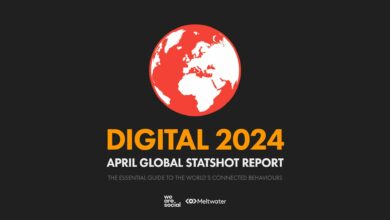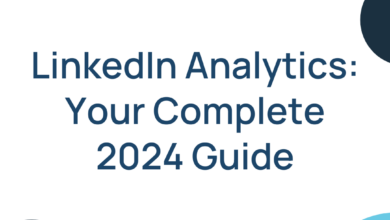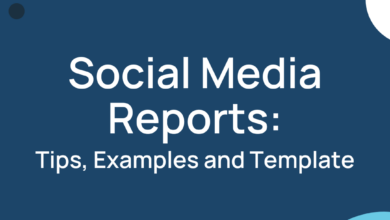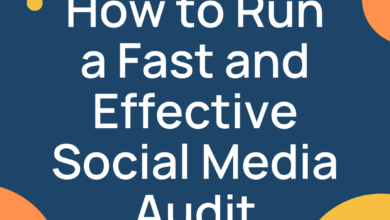How to Craft High-Impact Social Media Imagery in 2024
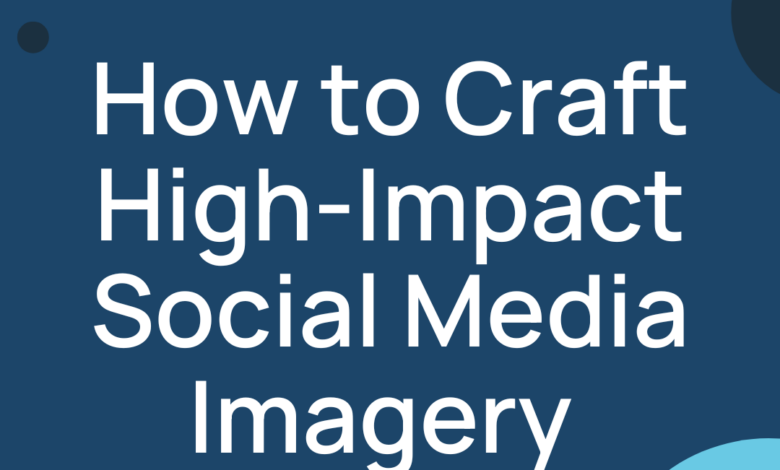
In the ever-evolving world of social media marketing, where attention spans are fleeting and competition is fierce, social media imagery has emerged as an indispensable tool for engagement, communication, and brand building.
While captivating text can certainly generate interest, it’s the power of visual content that captures attention, evokes emotions, and leaves a lasting impression. In fact, over 50% of marketers use visuals in more than 91% of their content.
Visual prowess is key in the digital arena, with giants like Boohoo and Gymshark leading the charge. It makes your brand’s visual identity memorable and encourages higher click-through and conversion rates. Ignoring the importance of visual content on your social channels can not only fade your brand from view, but also hit where it hurts most — your bottom line.
But there’s more to good visual content than nice stock images. Social media imagery should be carefully planned and tested for optimal results. In this guide, you’ll learn how to plan and craft social imagery that captivates your audience and ensures your social presence has a measurable impact.
The Psychology Behind Optimising Visuals for Social Media Platforms
It’s no secret that visual content has a massive impact on your brand’s online presence. In fact, 91% of consumers say they prefer visual content over written content.
But before you craft the perfect social media images, it’s important to get to grips with the psychology behind what makes an image really stand out.
Instant Attraction
Many people are unaware that instant attraction is driven by visual reflexes, a phenomenon that applies as much to social media marketing as it does to dating.
In the realm of social media, visuals zip by at breakneck speed, mirroring the rapid processing of our brains. Consequently, images possess the power to make your brand immediately identifiable, underscoring the significance of its distinct colours, shapes, and patterns.
Recognizing the pivotal role of these visual elements, it’s essential to strategically curate and present your brand’s imagery to capitalise on that split-second of attention. This is what can turn a passing glance into lasting engagement.
Emotive Design
Design is a silent ambassador of emotion. The right combination of colours and shapes doesn’t just catch the eye—it can give your content an experiential edge.
Warm colours such as red and yellow radiate energy and urgency, perfect for grabbing attention in high-energy posts. On the other hand, cool tones like blue can wash over your audience with a sense of tranquillity and peace, ideal for content that aims to soothe and reassure.
Take, for example, a health brand that chooses a palette of greens to permeate its imagery. This isn’t a random choice; green conjures an oasis of health and vitality, tapping into deep-seated associations with nature and growth. Its colour fosters trust and exudes calm, aligning perfectly with the brand’s message of well-being and serenity.
By harnessing the psychological impacts of colours and shapes, you’re doing more than just making your content pleasing to the eye. You’re crafting an emotional journey for your audience that resonates on a deeper level and is remembered long after the image is out of sight.
Mood by Design
Beyond mere decoration, colours serve as silent salespeople in the vast social media marketplace. They are visual stimuli and powerful psychological tools influencing behaviour and decision-making.
For example, with its inherent brightness, yellow can spark optimism and stimulate the senses, nudging viewers towards a purchase. Blue, calm, and collected are the cornerstones of trust and loyalty, encouraging customers to stay and engage with a brand.
A strategic tip for brand marketers is to weave your brand colours into the very fabric of your posts. This integration is a subtle guide, leading your audience towards the actions you want them to take.
Doing so reinforces brand recognition and aligns your content’s emotional undertone with your marketing objectives. In the nuanced world of social media marketing, your colour palette can influence a decision to engage, click and take action.
Insightful Imagery
The true power of imagery in social media can be harnessed not just by intuition but by insight—insight provided by tools like Locowise analytics.
This isn’t about counting likes or tallying shares; it’s about delving into the subconscious preferences of your audience. For instance, social media analytics may reveal a compelling pattern: images featuring people tend to outperform those with only graphics. This data is a valuable cue, signalling the need to pivot towards a more humanised visual approach for your brand.
By interpreting these metrics, you’re not just observing what content performs well. You’re uncovering the ‘why’ behind the engagement. This knowledge empowers you to craft a visual strategy that resonates more deeply with viewers, creating content they can connect with. It systematically matches your audience’s unspoken desires and elevates your brand’s visual storytelling to the next level.
Optimising Visuals for Social Media: A Platform-Specific Approach
Now that you’re versed in psychology, it’s time to match your visuals to each social media platform’s style and rules.
Tailoring Images for Platform Identities
Navigating the social media landscape requires a keen understanding that each platform boasts its own digital ‘outfit’—a unique environment that dictates the style of visual content it best presents.
Instagram, the virtual runway, is prime territory for high-resolution, narrative-rich images that tell a story with every pixel.
Meanwhile, the rapid-fire nature of Twitter demands visuals that can catch the user’s eye in a heartbeat, images that must hold their own against the brevity of the text they accompany.
Even on LinkedIn, where sharing articles and written content is more common, engaging visuals still play a key role. Research shows that articles with images are twice as likely to be shared than those without.
Marketers must recognize and respect these platform-specific nuances to craft imagery that doesn’t just blend into the background but pops off the screen, demanding attention.
This bespoke approach to each social media ‘stage’ can elevate a brand’s visibility, driving engagement in a way that is seen, remembered, and acted upon. In a world where every scroll is a chance to connect, the right image on the right platform can make all the difference.
Navigating the Dimension Maze
Every social media platform has its own set of rules for image dimensions, creating a complex landscape for marketers and content creation.
Facebook, for example, may showcase its content best in square format, while Pinterest’s design is tailored for portrait images that fit well with its vertical scrolling experience.
Understanding and keeping up to date with these dimension requirements is crucial for ensuring that your images appear as intended, maintaining their visual impact across different platforms.
Adequately sized and optimised visuals will attract the viewer’s eye and enhance engagement, making your social media posts more effective and cohesive in representing your brand.
Aesthetic Adaptation
Every social media platform communicates with its audience through an unspoken but profoundly influential language of aesthetics.
LinkedIn, with its professional and business-oriented atmosphere, naturally gravitates towards sleek, infographic-style visuals that speak to the analytical minds of industry professionals.
In contrast, Snapchat’s ephemeral and youthful vibe invites more experimental, vibrant, and in-the-moment content.
Recognizing and adapting to these visual dialects is crucial for creating resonating content. It’s about ensuring that your visual strategy is fluent in the language of each platform, thereby optimising your brand’s ability to engage with each unique audience.
When your content is aesthetically aligned with the medium it inhabits, it can reverberate across the digital landscape, amplifying your message and enhancing your digital presence.
The Art of Visual Storytelling
The final step to bring your social media imagery to life. Let’s delve into the art of visual storytelling—where alignment, contrast, and balance turn simple designs into compelling narratives.
Consider your social media visuals as the cover page of a book you’d like your target audience to open and continue reading. It needs to act as a compelling opening line, drawing people in to learn more.
Laying the Groundwork
Creating visuals that capture attention is an art that starts with the basics of graphic design. Alignment is your first building block.
It isn’t just about placing elements neatly; it’s about arranging them to take your viewer on a journey across your image. Like a well-directed movie, every part of your picture should move the story forward, keeping the audience engaged from start to finish.
Next comes the art of contrast—this is where your visual really starts to pop. It’s about making the important parts shout out on the canvas.
Think of contrast as the highlighter in your design toolkit, drawing the eye to the crucial messages you want to convey.
Lastly, balance is the key to visual harmony. It’s the principle that ensures your image feels complete and settled.
A well-balanced composition feels like a well-tuned orchestra, each element in perfect harmony, ensuring that the viewer’s eye is equally intrigued by all parts of the design.
The Visual Narrative
In the realm of graphic design, alignment is the unseen narrator, guiding the viewer’s gaze across the visual story. It’s about creating paths for the eyes to follow, paths that tell your brand’s tale in silent, powerful beats.
A strong alignment creates a sense of order, making even complex information feel accessible and digestible.
Consider how a magazine lays out its content, leading you from headline to article, with images and captions perfectly in place to keep you turning pages.
In your own designs, use alignment to create this same sense of flow. Line up your elements in such a way that the viewer can’t help but follow the narrative you’ve crafted, leading them to your call to action as naturally as a river flows to the sea.
The Spotlight of Design
Contrast is the design technique that calls attention, the one that says, ‘Look here! This matters!’
It works by setting elements against each other to create a visual hierarchy.
Bright against dark, bold against light, contrast ensures that your key message doesn’t just whisper; it sings.
In practice, contrast can be colour, size, or typography. It’s what makes a ‘Sale’ sign in a storefront window catch your eye or what draws your attention to the headline of an ad.
In your graphics, use contrast to lead the viewer’s attention where you want it. Highlight your most important message in a way that’s impossible to ignore, making your visual story not only seen but remembered.
Harmonizing the Visual Elements
Balance is the zen of graphic design, the equilibrium that holds a composition together. When an image is balanced, it feels right; it’s visually satisfying.
A balanced design doesn’t tip or overwhelm; instead, it invites the viewer to look at every part without getting stuck.
Achieving balance doesn’t mean everything must be centred or symmetrical. It’s about the distribution of visual weight.
Colours, textures, and shapes all have weight, and a skillful designer knows how to distribute these elements so that the eye moves comfortably across the piece.
Whether it’s a social media post or a billboard, the principle of balance will ensure that your design feels stable and your visual story feels complete.
See Which Visuals Make an Impact on Your Channels With Advanced Social Media Analytics
Whether you create complex graphics designs or share stock images alongside article links, only data can truly tell you which imagery is making an impact on your social media performance.
With Locowise, you can instantly get to know which content is optimal, and how to weave that with optimal posting times and more to get the best results.
The smart and predictive analytics in Locowise enable social media managers to save time on social media analytics and reporting to unlock more resources for creative ideas. Try it out with a free trial today!
The post How to Craft High-Impact Social Media Imagery in 2024 appeared first on Locowise Blog.
Source link

